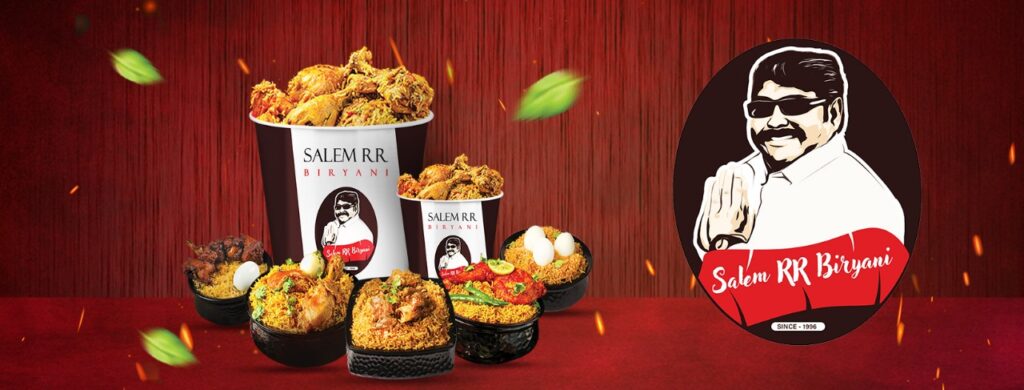
SALEM RR BIRIYANI
Straight from Andhra Pradesh—Hyderabadi Biryani
This is one of the most famous ones among the various types of biryanis of India. Go to any lane in any city in southern India; you will find at least one biryani shop lined with a biryani-lover crowd. This part of the nation knows how to dive into the delicacy of biryani.
Straight from Andhra Pradesh—Hyderabadi Biryani
This is one of the most famous ones among the various types of biryanis of India. Go to any lane in any city in southern India; you will find at least one biryani shop lined with a biryani-lover crowd. This part of the nation knows how to dive into the delicacy of biryani.
Nawabi treat from Uttar Pradesh—Awadhi Biryani
Lucknowi biryani derives its inspiration from the Persian style of cooking. Dum Pukht is the concept that defines this biryani. As a signature practice of most Persian cuisines, meat is partially cooked and layered in the Dum Pukht style and cooked in a sealed handi. It remains low on spices making it good for your tummy.
Straight from Andhra Pradesh—Hyderabadi Biryani
This is one of the most famous ones among the various types of biryanis of India. Go to any lane in any city in southern India; you will find at least one biryani shop lined with a biryani-lover crowd. This part of the nation knows how to dive into the delicacy of biryani.
Spicy temptation from Tamil Nadu—Dindigul Biryani
Dindigul Biryani is a spicy variant of biryani one can ever lay his hands on! This biryani uses the standard biryani masala but is topped with a lot of pepper, offering a tempting orangish hue. This biryani uses jeera sambar rice instead of the usual basmati rice, giving it a unique taste.
A flavourful treat from coastal Karnataka—Bhatkali Biryani
A lesser-known, less-spiced biryani makes up festival cuisines in most of the homes in coastal Karnataka. Though low on spice, this one of the biryanis of India carries a magical flavour. Credited to the Nawayath Muslims of Bhatkal, Karnataka—one can find onions and green chillies in abundance in this recipe. The layering of ingredients is followed in this biryani as well.
The sweetness from the East—Kolkata Biryani
This is one of the biryanis of India known for its sweet and spicy aroma. A handful of different herbs and nuts creates this mouthwatering amalgamation! The cooking style is similar to Awadhi Biryani, but the taste is well-distinguished.
Left but not forgotten—Sindhi Biryani
Every food lover’s delight—Sindhi Biryani is a gift from Sindh province, which has now moved to Pakistan. This cuisine includes a generous amount of chopped green chillies, mint and coriander leaves paste, roasted spices, onions, nuts, and dried fruits, making it very savoury! It is further cooked in yoghurt, making it more aromatic and flavoury
Left but not forgotten—Sindhi Biryani
Every food lover’s delight—Sindhi Biryani is a gift from Sindh province, which has now moved to Pakistan. This cuisine includes a generous amount of chopped green chillies, mint and coriander leaves paste, roasted spices, onions, nuts, and dried fruits, making it very savoury! It is further cooked in yoghurt, making it more aromatic and flavoury
The richness of nuts and goodness of rice—Malabar Biryani
The particular taste is added to this biryani by a variety of rice produced and found locally in Khyma rice. The flavour is further enhanced by using spices, cashew nuts, and raisins. Furthermore, this biryani has an altogether different cooking style
Soul-filling-food from Maharashtra—Bombay Biryani
Bombay Biryani is one of the biryanis of India that have the right amount of sweetness, spiciness, and tanginess to them. It is cooked in dum style, with a rich mix of spices and fried potatoes. Basmati rice is usually used to create this biryani, with a layering process where each layer is topped with kewra water for an aromatic experience.


















































